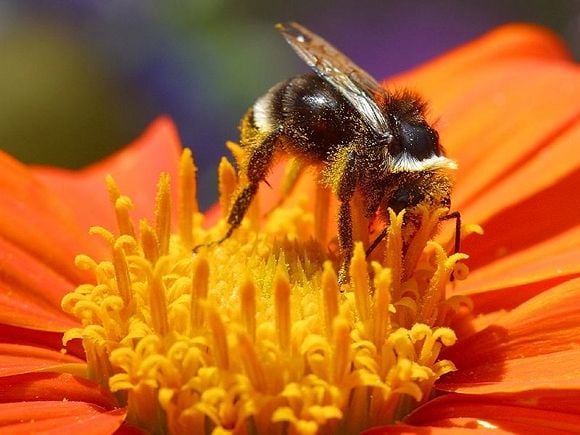
Diesel fumes mask the smell of the tastiest flowers, say experts
Not only are cars apparently ruining the atmosphere and driving commuters crazy, they're now confusing our bees and starving the planet, too.
That's according to boffins who reckon that diesel fumes are stopping the hardworking insects from being able to sniff out the flowers they want to forage in - which could affect pollination and, ultimately, global food security.
Bees use a combination of sight and smell to spot the flowers that produce nectar and need insect pollination. Once the odour of the right flower has been learned, any alteration to the smell can make the bee incapable of recognising it.
Researchers from the University of Southampton discovered that common air pollutants found in diesel exhaust fumes could affect the ability of honeybees to find and recognise the flowers they forage.
The study mixed eight chemicals found in the smell of oil rapeseed flowers with clean air and with car exhaust-filled air. Six of the eight chemicals were reduced in volume by the diesel air, while two disappeared altogether within a minute.
The boffins then repeated the text with NOx gases - nitric oxide and nitrogen dioxide, both found in diesel fumes - and saw the same result, suggesting that the NOx gases were the problem.
“Honeybee pollination can significantly increase the yield of crops and they are vital to the world’s economy - £430 million a year to the UK alone," ecology professor Guy Poppy said. "However to forage effectively they need to be able to learn and recognise the plants. The results indicate that NOx gases - particularly nitrogen dioxide - may be capable of disrupting the odour recognition process that honeybees rely on for locating floral food resources.”
"Honeybees use the whole range of chemicals found in a floral blend to discriminate between different blends,” continued Professor Poppy, “and the results suggest that some chemicals in a blend may be more important than others.”
The full study, "Diesel exhaust rapidly degrades floral odours used by honeybees",was published in Scientific Reports
No comments:
Post a Comment